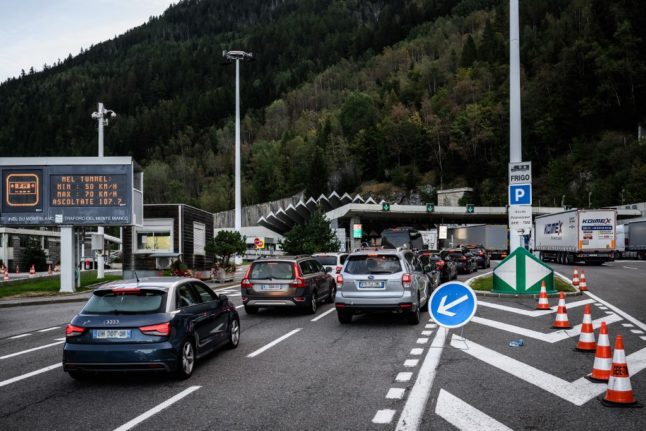Rail services remain suspended between Italy and France after a landslide hit the Maurienne valley area on August 27th, temporarily closing the Fréjus tunnel between St Michel de Maurienne and Modane.
Around 10,000 cubic metres of rock fell after heavy rain in Saint-André à La Praz, roughly 20 kilometres from the French border with Italy.
The A43 France-Italy road link via the tunnel reopened to traffic just over a week after the landslide, but the railway line remained shut.
Restoration work on the line was initially expected to take around two months, but French authorities have since said it will take until summer 2024.
The Savoy prefecture and regional director of French rail operator SNCF announced on October 2nd that the work is proving to be more difficult than expected and will now take at least seven months, reported the Turin edition of Italian newspaper La Stampa.
The work has not yet begun on the line as efforts are still underway to secure the area following the landslide, La Stampa reported, meaning the best-case scenario is that it will reopen in June 2024, though it could remain closed until September.
The closure means “for almost a year, passengers who use TGV and Frecciarossa trains between Paris and Milan, as well as the 170 freight trains that use this line every week, will have to find other solutions”, stated the Transalpine Lyon-Turin railway committee.
Given that alternative rail routes mean “very long detours through Switzerland or Nice” most travellers are likely to “turn to the car for medium-distance journeys and flights for long distances,” the committee said.
“With around twenty daily flights, the Paris-Milan connection is already one of the busiest in Europe,” it added, noting that low-cost airline Volotea “has already announced additional flights” on the route.
The closure of the rail route is expected result in heavy motorway traffic between Maurienne and the Susa Valley, as well as on the Turin ring road.
The situation is set to be further complicated by a planned closure of the Mont Blanc tunnel for two months, which was postponed immediately following the landslide and is now set to go ahead from October 16th to December 18th.
Since the closure of the rail link the Mont Blanc tunnel has seen a 200-percent increase in traffic, Italian newspaper Il Sole 24 Ore reported.
The Turin Chamber of Commerce warned the closures could have “disastrous” consequences for the cross-border economy, especially related to winter tourism and the Christmas holidays.
The Savoy prefecture said a “transport hub” will be set up at the Saint-Michel-de-Maurienne station in time for the 2023-24 ski season, Il Sole 24 Ore reported, from where TGV passengers will be able to board shuttle buses heading for nearby resorts.



 Please whitelist us to continue reading.
Please whitelist us to continue reading.
Member comments